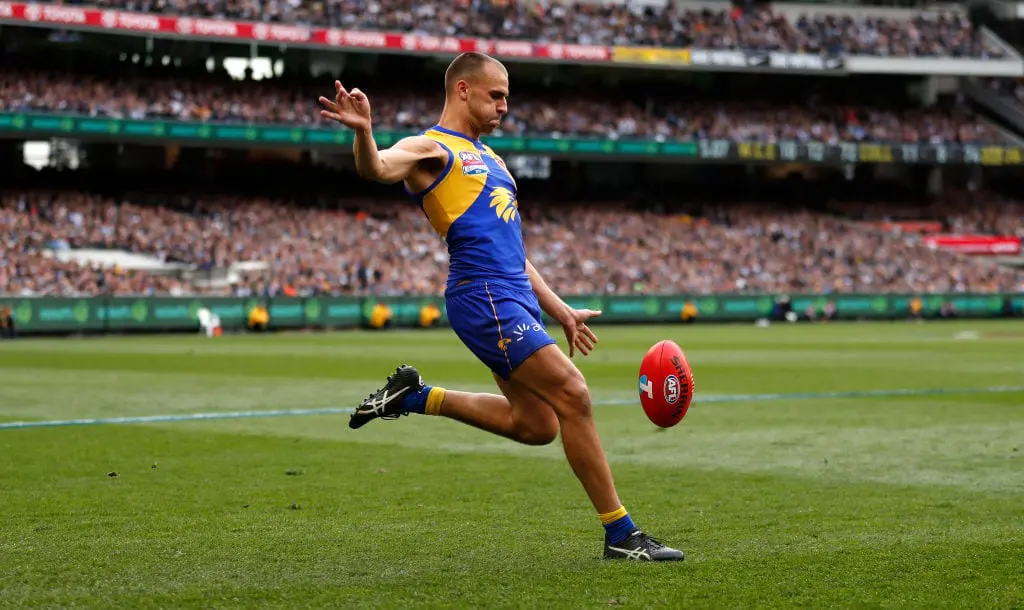The football world is filled with patterns and trends that seem so improbable that people deem them to be true.
One has to look no further than the 2018 Grand Final between the Pies and Eagles when the West Coast had won both their clashes throughout the year.
Since only one team before this had beaten a side three times in a year, the writing seemed to be on the wall for Collingwood to pick up another flag.
Five goals up after the first 15 minutes and it looked like a trend set in stone.
However, as we all know, the Magpies fell agonisingly short, losing by under a kick after Dom Sheed's miraculous goal.

We take a look at the most popular Grand Final "trends" or omens that are often told before a big game like Saturday's Grand Final.
In doing so, we will judge each of them as either facts or myths before we then predict the Premiers for the 2022 AFL Grand Final.
MYTH: Finishing lower down the ladder makes you more likely to win the Grand Final
Whilst this did appear to be true for a period of time, particularly when finishing third seemed the place to be, there has been a 50-50 split in Grand Finals between sides who finished higher on the ladder and those who finished lower (11 apiece).
The most notable of these came in 2016 when the Dogs downed the Swans after finishing seventh compared to the Swans' minor premiership finish.
This "omen" really gained traction in 2018 when Pies fans were looking for any statistic to topple the higher-placed Eagles.
In the four years previous to this 2018, all four Premiers had finished lower on the ladder than their fellow Grand Finalists.
MYTH: Losing to a side earlier in the year means you are more likely to win in a Grand Final
Bouncing back from defeat and improving upon the areas in which you were poor is a popular idea.
However, as is the more logical standpoint, a side that wins earlier in the year against a side is more likely to beat them come to the last game in September.
Delineating this, 57% of teams who beat the eventual runners up earlier in the year also beat the same team in the Grand Final.
The Swans would be favoured in this category since they beat the Cats by 30 points in a game overawed by Buddy's 1000th goal.
FACT: Having a shorter break makes you more likely to win the Grand Final
Whilst a longer break would seem to be more beneficial for players since they have more time to rest up, it turns out that having a shorter break in between playing a Preliminary Final and a Grand Final makes a side 9% more likely to win the Grand Final.
Whether this is due to the fact that teams can generate more momentum with a shorter break or something else, a shorter break seems more beneficial.
Once again, Sydney would appear the historical choice since they are coming off a seven-day break compared to the Cats' eight.
MYTH: Winning by less in the Preliminary Final makes you more likely to win the Grand Final
Although winning games by small margins can build belief in sides, giving a side a good old thumping in a Prelim seems the way to go.
Since the turn of the century, the side that won by more points in the Preliminary Final was 14% more likely to win.
Given the Cats' 71-point win against the Lions on Friday night, they get the nod in this category.
MYTH: Being the better clearance side during the year makes you more likely to win
Astonishingly, out of the last 22 Premiers, only seven of them were better clearance sides during the year than their opposition.
That means that a side is 37% more likely to win a flag if they are the worse clearance side during the year.
Since Geelong has been the better clearance side in 2022, Sydney ironically gets the nod here.

FACT: The better clearance side on the day wins
Over the last 10 years, a side is a 70% chance of winning the flag if they won the clearance battle on the day.
Winning the clearances allows sides to send the ball inside the forward 50 before either scoring or setting a zone around the opposition's 50 to keep the ball in there.
Quite amazingly, the side that is the worse clearance side during the year usually wins the clearances in the Grand Final.
MYTH: The better tackling side during the year wins the Grand Final
As was the case with clearances, the worse tackling side during the course of the year has historically been less likely to win.
Corroborating this, a side is 18% more probable to win the Grand Final if they are the poorer tackling unit.
Since Sydney sit higher in tackles than the Cats, the Cats get the historical edge here.
FACT: The better tackling side on the day wins the Grand Final
Unsurprisingly, the better tackling unit on the day gets the job done 60% of the time.
With tackling being a way of putting on pressure and preventing opposition ball flow, tackling hard and frequently is essential for a side's winning chances in a tough, gritty match.
Once again, the side that tackles worse during the year tends to somehow tackle better on Grand Final Day.
Whether this is because of tackling being more of a focus on the day or another factor, there is a seemingly contradictory interesting but strong correlation between tackling worse during the year than in the Grand Final.
WATCH: 2022 AFL Grand Final - Who wins and why?
WATCH: How disciplined Swans can restrict runaway Cats
WATCH: Geelong's hot streak to culminate in glory?







